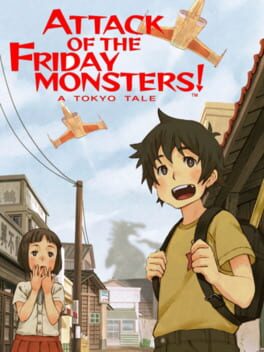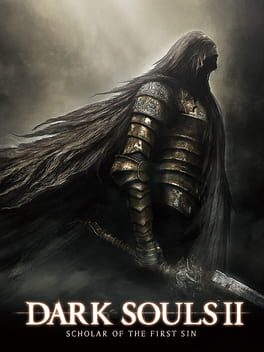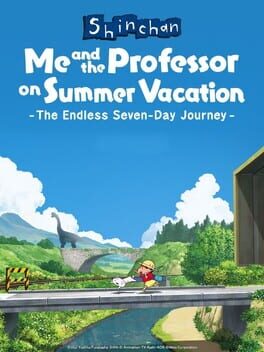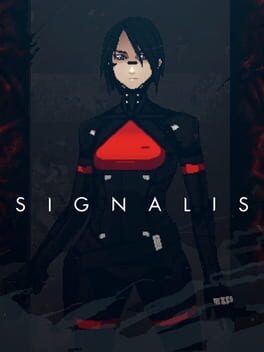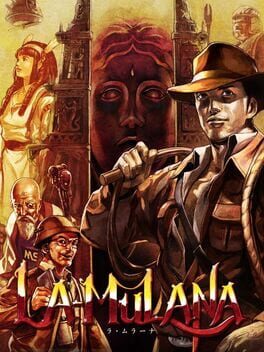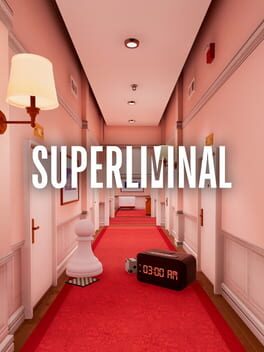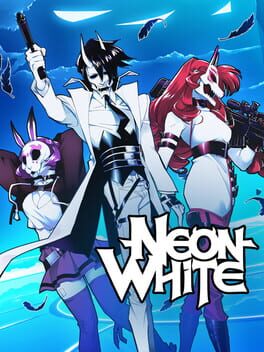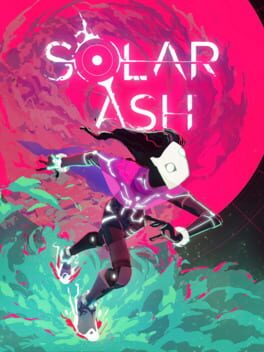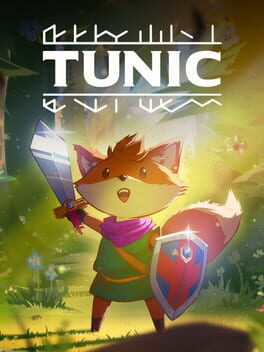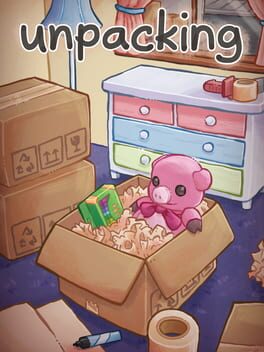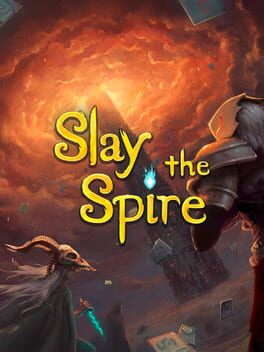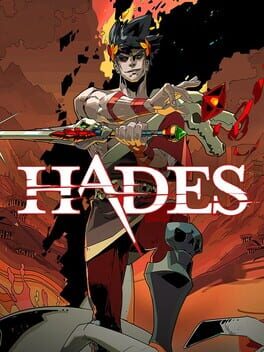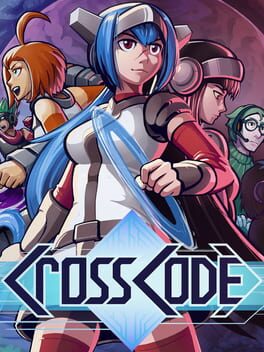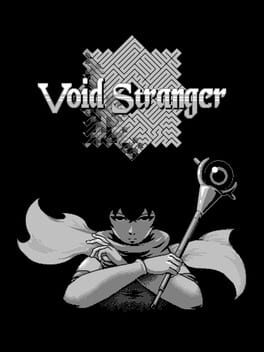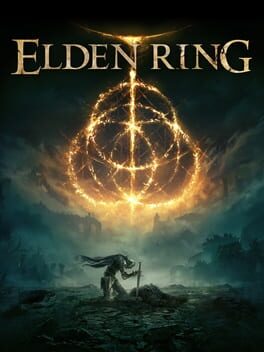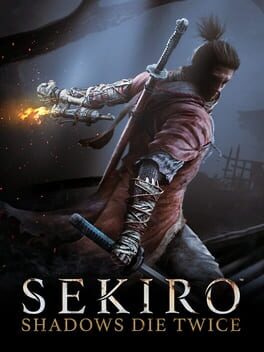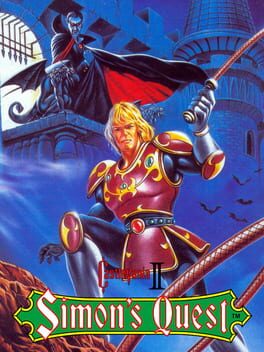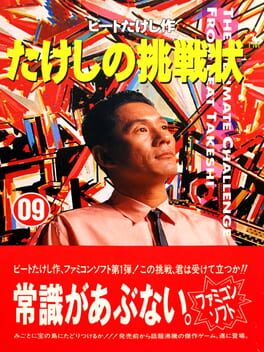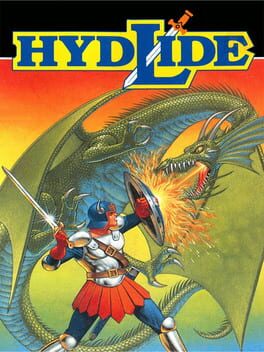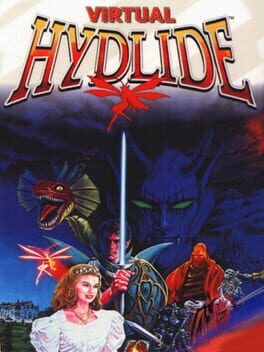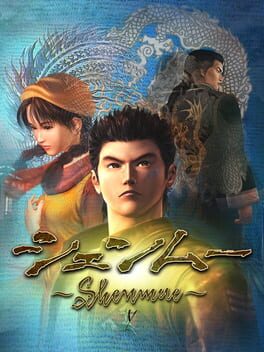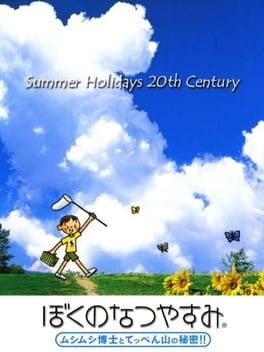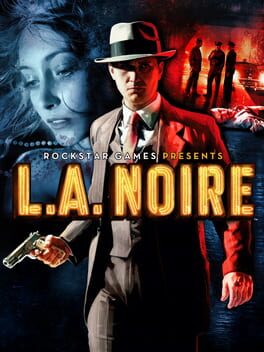ciswoman
BACKER
52 reviews liked by ciswoman
「電柱に登りて工夫蝉となる。」
'Up on the hydro pole
the electrician turns
into a cicada.'
– Mitsuhashi Takajo (1899-1972), in Makoto Ueda (ed.), Far Beyond the Field, 2003.
Played during the Backloggd’s Game of the Week (Feb. 28 – Mar. 6, 2023).
In the 1960s, Japan experienced very strong economic growth, which translated into rapid modernisation. As the showcase of Japanese urbanisation for the world to see since the 1964 Tokyo Olympics, the city was driven into an intense building spree to keep up with the population pressure that was bursting the city centre. Even with the countless buildings constructed, demand was so overwhelming that the population eventually moved to the suburbs, where anarchic housing projects were launched. By 31st December 1968, the Setagaya district had 1,450,000 square metres of floor in reinforced concrete or steel-framed buildings [1]. One can imagine that the buildings were piling up in chaos: a first urbanisation plan had been proposed in 1956 to enclose the western part of Tokyo Bay – i.e. the Tokyo-Kawasaki-Yokohama metropolis – with green spaces and to build a residential ring beyond, but the authorities were largely overwhelmed and it was not until 1965 that the urbanisation plan for Greater Tokyo was actually adopted.
Depicting the Japanese suburban modernisation
Setagaya, the special ward bordering the Tama River in which the game takes place, was built out of necessity as a 'garden suburb', meaning a predominantly residential area with largely privatised land and considerable influence from private railway companies. Unlike the garden cities of the late 1970s, this first wave was still inchoate, with frictions between productive spaces, factories and former housing. Kaijū ga Deru Kinyōbi is set precisely in 1971, at a moment that reveals how two different worlds interact on the cusp of forced urbanisation. The subtitle 'A Tokyo Tale', as usual in Kaz Ayabe's games, invites players to reflect on these historical elements, which give the game a special identity.
The player takes on the role of Sohta, a young boy who has just moved with his family to the Fuji no Hana neighbourhood – which means 'wisteria', a symbol of love. His parents run a dry-cleaning shop, and the first few seconds show a pre-1970s way of life, with old houses that double as shops and homes. Washing machines are stacked behind the front door, while the living room is hidden behind a thin partition. The discussion between Sohta and his parents quickly turns to Friday's Kaijus, both those on TV and those in reality. By exploring the town and talking to the NPCs, the player soon realises that this still green and unindustrialised area has been chosen by a TV studio as a location for their tokusatsu. It is obvious that the various children have not yet rationalised what a film set is and believe that monsters really exist.
In the early 1970s, although television was no longer new, access was still relatively limited. Some places had no reception, and it was not until the 1980s that cable became widely available in major cities. Setagaya is equipped, however, which is an argument for the children to be happy to live there, as they can watch their series every Friday. Kaijū ga Deru Kinyōbi captures aspects of everyday life through the eyes of children. Industrialisation is recontextualised as a great unknown, with smoke from distant factories looking like monsters. The train line running along Fuji no Hana marks the time of day with its noises and delineates the territory for the children to explore. A photograph from 1968 gives an idea of how these areas were organised and explains how an entire generation embraced the idea of the train as a sign of tranquillity, before the small peripheral tram lines disappeared. As a sign that the game evokes a bygone era, Sohta learns from Officer Kobayashi that Fuji no Hana is punctuated by railway strikes, forcing workers to walk along the lines to get to their jobs closer to central Tokyo. The routine nature of these social movements does not lead to explicit political commentary in the game, but shows that they were a normal part of Japanese life. Far from the current situation where workers no longer dare to protest, in the 1960s and 1970s there were still several thousand protests a year.
Dreaming of a lost solidarity
In Ayabe's words, Kaijū ga Deru Kinyōbi should convey an 'admiration for the era itself and the people who lived in it, rather than a longing for the art form of the era', in particular 'their caring nature and the diligence and drive that helped Japan grow into the second largest economy in the world' [2]. Ayabe's point of view is obviously ideologically situated. Born in 1965, he grew up on the cusp of two very different eras and has a strong nostalgia for Kaettekita Urutoraman (1971-1972), the first television series he remembers. The design of Fuji no Hana thus follows these themes, exploring both the sincerity of the inhabitants of a small, close-knit community and the modernity translated into a new form of entertainment. This ambivalence helps to make Kaijū ga Deru Kinyōbi a story of growth, both from a personal and a communal perspective. As Sohta searches out answers to his questions, his adventure in Fuji no Hana is an excuse for the player to see other characters grow up. The other children try to overcome their fears and doubts, while the adults work to communicate better with each other or to fulfil their forgotten dreams so as not to live with regrets.
This emphasis on creating an idyllic community is a reaction to the gradual disappearance of solidarity in recent decades. While garden cities were originally conceived as convenient residential areas for the middle – or even working – class, in practice they have been gentrified and are now the most expensive areas in Japan. A textbook example is Den-en-chōfu in western Tokyo. The massive increase in the price of a square metre in the 1980s (over 2,500,000 yen per square metre) led to a fragmentation of property ownership, an ageing population and a transformation of the urban landscape with a withdrawal of the individual. The hedges that were the typical symbol of the neighbourhood have been replaced by large walls equipped with security cameras. [3] In contrast, Kaijū ga Deru Kinyōbi openly encourages proximity between neighbours. Houses are built next to each other, and the streets are almost like shared courtyards. While the alleys are still unpaved, signs of modernity can be seen here and there: the buildings are composite, half concrete and half wood, while the main artery is well renovated, suitable for the new cars that are appearing in the neighbourhood. New ways of working are also emerging: one of Billboard's father's clients is a supermarket, which forces him to work both day and night.
The childlike and healing charm of tokusatsu
But these elements are not read as fatal by the various characters. Television and the kaiju series are portrayed as a source of dreams and hope, and provide life goals for each member of the Fuji no Hana community. The children learn the values of justice, while Megumi, the director, understands that inspiring such emotions in them is also a beautiful experience. The hierarchy imposed by the rules of the card game is a social contract that the children accept wholeheartedly, taking turns to be the master or servant of another, as luck would have it. The only caveat is the obligation to fall to the ground when a master casts a spell on their servant: Kaijū ga Deru Kinyōbi operates a translation of adult relationships into the world of children, attributing a positive valence to pacified relations between communicating neighbours, rather than gifts and counter-gifts involving class dynamics. Writers have as much merit as manual workers in a framework where solidarity prevails.
The emphasis on communication is found throughout the adventure, both in the characters' stories – such as Emiko getting closer to her father by explaining her marriage plans – and in the fact that the adults play along and do not stifle the children's resourceful imaginations. LordDarias mentioned elements of magical realism in some scenes, and I agree. While an adult's eye can immediately understand what is going on, there are some parts that remain unexplained, especially towards the end of the game, where nothing helps to clarify why Sohta ended up in the restaurant. But as with all works based on magical realism, the answer is of little importance. The interest lies in the message conveyed and the magic of the occasion itself. To cherish and preserve that is the strength of the game and of this small community. Similarly, there is a lovely form of communication in the post-game, where Sohta can talk to the various characters, moving from one topic to another. This sequence, which allows the player to gather knowledge from each NPC, is very similar to the exchange quests of the Zelda games, but with information instead of items. The conversations shed a little more light on each character's motivations and provide an elegant conclusion to Sohta's Saturday.
Admittedly, the card game is quite decontextualised from the rest of the narrative, and even feels disconnected from the exploration system – the player must collect small, shiny glims all over Fuji no Hana to mysteriously create playing cards – but that hardly matters. Kaijū ga Deru Kinyōbi is a brief dive into a vanished Japan, partially mythologised through Kez Ayabe's childhood memories. While the game depicts a blessed time that warrants further nuance from other experiences of everyday Japanese life, its candour and desire to portray a supportive community is endearing. Like the rest of Millennium Kitchen's works, the title is part of the iyashikei trend: for a three-hour experience, it accomplishes its purpose perfectly.
__________
[1] François Doumenge, ‘L'urbanisation et l'aménagement de l'espace au Japon’, in Les Cahiers d’outre-mer, no. 22-88, 1969, pp. 369-371.
[2] Andrew Vestal, ‘Interview: Kaz Ayabe & Attack of the Friday Monsters!’, on Gaming Intelligence Agency, 20th August 2013, consulted on 1st March 2023.
[3] Tomoko Kubo, Raphaël Languillon-Aussel, ‘Les cités-jardins au Japon : entre urbanisme occidental et hybridation locale’, on Géoconfluences, 30th June 2017, consulted on 1st March 2023.
'Up on the hydro pole
the electrician turns
into a cicada.'
– Mitsuhashi Takajo (1899-1972), in Makoto Ueda (ed.), Far Beyond the Field, 2003.
Played during the Backloggd’s Game of the Week (Feb. 28 – Mar. 6, 2023).
In the 1960s, Japan experienced very strong economic growth, which translated into rapid modernisation. As the showcase of Japanese urbanisation for the world to see since the 1964 Tokyo Olympics, the city was driven into an intense building spree to keep up with the population pressure that was bursting the city centre. Even with the countless buildings constructed, demand was so overwhelming that the population eventually moved to the suburbs, where anarchic housing projects were launched. By 31st December 1968, the Setagaya district had 1,450,000 square metres of floor in reinforced concrete or steel-framed buildings [1]. One can imagine that the buildings were piling up in chaos: a first urbanisation plan had been proposed in 1956 to enclose the western part of Tokyo Bay – i.e. the Tokyo-Kawasaki-Yokohama metropolis – with green spaces and to build a residential ring beyond, but the authorities were largely overwhelmed and it was not until 1965 that the urbanisation plan for Greater Tokyo was actually adopted.
Depicting the Japanese suburban modernisation
Setagaya, the special ward bordering the Tama River in which the game takes place, was built out of necessity as a 'garden suburb', meaning a predominantly residential area with largely privatised land and considerable influence from private railway companies. Unlike the garden cities of the late 1970s, this first wave was still inchoate, with frictions between productive spaces, factories and former housing. Kaijū ga Deru Kinyōbi is set precisely in 1971, at a moment that reveals how two different worlds interact on the cusp of forced urbanisation. The subtitle 'A Tokyo Tale', as usual in Kaz Ayabe's games, invites players to reflect on these historical elements, which give the game a special identity.
The player takes on the role of Sohta, a young boy who has just moved with his family to the Fuji no Hana neighbourhood – which means 'wisteria', a symbol of love. His parents run a dry-cleaning shop, and the first few seconds show a pre-1970s way of life, with old houses that double as shops and homes. Washing machines are stacked behind the front door, while the living room is hidden behind a thin partition. The discussion between Sohta and his parents quickly turns to Friday's Kaijus, both those on TV and those in reality. By exploring the town and talking to the NPCs, the player soon realises that this still green and unindustrialised area has been chosen by a TV studio as a location for their tokusatsu. It is obvious that the various children have not yet rationalised what a film set is and believe that monsters really exist.
In the early 1970s, although television was no longer new, access was still relatively limited. Some places had no reception, and it was not until the 1980s that cable became widely available in major cities. Setagaya is equipped, however, which is an argument for the children to be happy to live there, as they can watch their series every Friday. Kaijū ga Deru Kinyōbi captures aspects of everyday life through the eyes of children. Industrialisation is recontextualised as a great unknown, with smoke from distant factories looking like monsters. The train line running along Fuji no Hana marks the time of day with its noises and delineates the territory for the children to explore. A photograph from 1968 gives an idea of how these areas were organised and explains how an entire generation embraced the idea of the train as a sign of tranquillity, before the small peripheral tram lines disappeared. As a sign that the game evokes a bygone era, Sohta learns from Officer Kobayashi that Fuji no Hana is punctuated by railway strikes, forcing workers to walk along the lines to get to their jobs closer to central Tokyo. The routine nature of these social movements does not lead to explicit political commentary in the game, but shows that they were a normal part of Japanese life. Far from the current situation where workers no longer dare to protest, in the 1960s and 1970s there were still several thousand protests a year.
Dreaming of a lost solidarity
In Ayabe's words, Kaijū ga Deru Kinyōbi should convey an 'admiration for the era itself and the people who lived in it, rather than a longing for the art form of the era', in particular 'their caring nature and the diligence and drive that helped Japan grow into the second largest economy in the world' [2]. Ayabe's point of view is obviously ideologically situated. Born in 1965, he grew up on the cusp of two very different eras and has a strong nostalgia for Kaettekita Urutoraman (1971-1972), the first television series he remembers. The design of Fuji no Hana thus follows these themes, exploring both the sincerity of the inhabitants of a small, close-knit community and the modernity translated into a new form of entertainment. This ambivalence helps to make Kaijū ga Deru Kinyōbi a story of growth, both from a personal and a communal perspective. As Sohta searches out answers to his questions, his adventure in Fuji no Hana is an excuse for the player to see other characters grow up. The other children try to overcome their fears and doubts, while the adults work to communicate better with each other or to fulfil their forgotten dreams so as not to live with regrets.
This emphasis on creating an idyllic community is a reaction to the gradual disappearance of solidarity in recent decades. While garden cities were originally conceived as convenient residential areas for the middle – or even working – class, in practice they have been gentrified and are now the most expensive areas in Japan. A textbook example is Den-en-chōfu in western Tokyo. The massive increase in the price of a square metre in the 1980s (over 2,500,000 yen per square metre) led to a fragmentation of property ownership, an ageing population and a transformation of the urban landscape with a withdrawal of the individual. The hedges that were the typical symbol of the neighbourhood have been replaced by large walls equipped with security cameras. [3] In contrast, Kaijū ga Deru Kinyōbi openly encourages proximity between neighbours. Houses are built next to each other, and the streets are almost like shared courtyards. While the alleys are still unpaved, signs of modernity can be seen here and there: the buildings are composite, half concrete and half wood, while the main artery is well renovated, suitable for the new cars that are appearing in the neighbourhood. New ways of working are also emerging: one of Billboard's father's clients is a supermarket, which forces him to work both day and night.
The childlike and healing charm of tokusatsu
But these elements are not read as fatal by the various characters. Television and the kaiju series are portrayed as a source of dreams and hope, and provide life goals for each member of the Fuji no Hana community. The children learn the values of justice, while Megumi, the director, understands that inspiring such emotions in them is also a beautiful experience. The hierarchy imposed by the rules of the card game is a social contract that the children accept wholeheartedly, taking turns to be the master or servant of another, as luck would have it. The only caveat is the obligation to fall to the ground when a master casts a spell on their servant: Kaijū ga Deru Kinyōbi operates a translation of adult relationships into the world of children, attributing a positive valence to pacified relations between communicating neighbours, rather than gifts and counter-gifts involving class dynamics. Writers have as much merit as manual workers in a framework where solidarity prevails.
The emphasis on communication is found throughout the adventure, both in the characters' stories – such as Emiko getting closer to her father by explaining her marriage plans – and in the fact that the adults play along and do not stifle the children's resourceful imaginations. LordDarias mentioned elements of magical realism in some scenes, and I agree. While an adult's eye can immediately understand what is going on, there are some parts that remain unexplained, especially towards the end of the game, where nothing helps to clarify why Sohta ended up in the restaurant. But as with all works based on magical realism, the answer is of little importance. The interest lies in the message conveyed and the magic of the occasion itself. To cherish and preserve that is the strength of the game and of this small community. Similarly, there is a lovely form of communication in the post-game, where Sohta can talk to the various characters, moving from one topic to another. This sequence, which allows the player to gather knowledge from each NPC, is very similar to the exchange quests of the Zelda games, but with information instead of items. The conversations shed a little more light on each character's motivations and provide an elegant conclusion to Sohta's Saturday.
Admittedly, the card game is quite decontextualised from the rest of the narrative, and even feels disconnected from the exploration system – the player must collect small, shiny glims all over Fuji no Hana to mysteriously create playing cards – but that hardly matters. Kaijū ga Deru Kinyōbi is a brief dive into a vanished Japan, partially mythologised through Kez Ayabe's childhood memories. While the game depicts a blessed time that warrants further nuance from other experiences of everyday Japanese life, its candour and desire to portray a supportive community is endearing. Like the rest of Millennium Kitchen's works, the title is part of the iyashikei trend: for a three-hour experience, it accomplishes its purpose perfectly.
__________
[1] François Doumenge, ‘L'urbanisation et l'aménagement de l'espace au Japon’, in Les Cahiers d’outre-mer, no. 22-88, 1969, pp. 369-371.
[2] Andrew Vestal, ‘Interview: Kaz Ayabe & Attack of the Friday Monsters!’, on Gaming Intelligence Agency, 20th August 2013, consulted on 1st March 2023.
[3] Tomoko Kubo, Raphaël Languillon-Aussel, ‘Les cités-jardins au Japon : entre urbanisme occidental et hybridation locale’, on Géoconfluences, 30th June 2017, consulted on 1st March 2023.
The final stretch of Dark Souls II is so effective from the perspective of storytelling, that I regret not documenting my earlier frustrations in better detail. True, even doing so I would have very little to contribute beyond the laundry list of complaints already shared by anyone who remembers the game: enemy and level designs are squat and very Maximo: Ghosts to Glory, the combat is as loose and weightless as an N64 Zelda title (but it expects a Bloodborne-like performance from you), the success of Demon's and Dark Souls gives it free license for scattershot cruelty, the total openness combined with fragmented levels (and uneven difficulties within) and steep punishment for failure has it even more bewildering than the first time you started up Demon's Souls; a problem ironed out by its follow up. But then, and here's the thing, acknowledging that last point is the first step in appreciating a future where these things continued to push for total emotional/physical/ludic bewilderment over what became across Bloodborne, Dark Souls 3, and Sekiro, progressively fine-tuned to tight, reactive play and linear progression. My preference is still with the proprioceptive rhythms of the other games, but the other games have never highlighted such an agonising disconnect between body and mind as Dark Souls II. Quite the opposite: for all they speak of corrupted flesh and the curse of undeath, they give way to the catharsis of the agile, the dynamic, the mastery of limbs and speed. The cosmic fatalism of their narratives is known but never known, in the posture, in the madness, in the burden of having to try for thankless and indeterminate progress, which is certainly not a criticism, but it's also not the only way to do things. Dark Souls II is less preoccupied with suggesting a shadowy cosmology than with the way it might register in dreams and memories — death is not tied to any greater philosophical purpose than going back to sleep, so you don't have to hurt any more. And this is where the final stretch of the game is so effective: what was so bewilderingly open finds itself inexorably within in the pull of thanatos, what was frustrating finds itself a sense of purpose in the game's guide, appearing intermittently to say only I'm sorry, I'm sorry you're here.
Elements of Boku no Natsuyasumi and Shin-chan combining to make something not quite as good as either.
I'm pretty gutted about how this turned out. The peaceful vacation vibe is marred by essentially having a huge checklist that needs to be done, and that very same peaceful vacation vibe doesn't allow Shin-chan to really be himself. He feels watered down and one-note, as do most of the other characters. Everyone's so saccharine and nice. Misae doesn't lose it and give him a wee bonk on the head. Hiroshi never gets in bother by not thinking before speaking. Shin-chan doesn't get to do anything more than crap puns. Shiro's basically welded to a fucking doghouse.
It feels like such a surface level understanding of why people like Shin-chan, and maybe Boku no Natsuyasumi to the same extent. I can't speak with authority on that as Attack of the Friday Monsters is my only exposure to the series beyond gameplay clips over the years. But a big list of tasks to perform to progress a barely there story does not feel like what these games are supposed to be about.
Just a strange one, because the looping nature of your week's vacation makes it seem like things might go on forever, but then after finishing a certain mission, the game kinda completes itself. It was like I was walked through maybe eight different scenarios that all just suddenly ended missions I had gotten weeks earlier. It might as well have been cutscenes. Didn't feel like I had done anything to earn them. Just played long enough for them to end. Why am I even holding the controller?
He doesn't get his dick out once.
I'm pretty gutted about how this turned out. The peaceful vacation vibe is marred by essentially having a huge checklist that needs to be done, and that very same peaceful vacation vibe doesn't allow Shin-chan to really be himself. He feels watered down and one-note, as do most of the other characters. Everyone's so saccharine and nice. Misae doesn't lose it and give him a wee bonk on the head. Hiroshi never gets in bother by not thinking before speaking. Shin-chan doesn't get to do anything more than crap puns. Shiro's basically welded to a fucking doghouse.
It feels like such a surface level understanding of why people like Shin-chan, and maybe Boku no Natsuyasumi to the same extent. I can't speak with authority on that as Attack of the Friday Monsters is my only exposure to the series beyond gameplay clips over the years. But a big list of tasks to perform to progress a barely there story does not feel like what these games are supposed to be about.
Just a strange one, because the looping nature of your week's vacation makes it seem like things might go on forever, but then after finishing a certain mission, the game kinda completes itself. It was like I was walked through maybe eight different scenarios that all just suddenly ended missions I had gotten weeks earlier. It might as well have been cutscenes. Didn't feel like I had done anything to earn them. Just played long enough for them to end. Why am I even holding the controller?
He doesn't get his dick out once.
Signalis
2022
An extremely smart intersection of mechanics from orthodox Resident Evil and orthodox Silent Hill, very little in Signalis feels wholly new but the craft with which it's deployed contextualizes it in a new way. The burn mechanic (destroy a corpse or it will return to life eventually) is borrowed from REGCN, but it allows Signalis to make its infrequent and out-of-the-way save points risky to get to and from, recreating an emergent version of RE's iconic save economy despite the use of SH-style save points.
My favorite mechanical consequence is the way the strict 6-item inventory limit forces players to create their own ad hoc class. Sure, there are items that can heal you fast, items that can heal for a lot, items that can heal automatically—but when you're moving into a new room and you need three spare inventory slots just in case, you can only choose one. You can only choose one weapon as well, and you may have to choose between bringing any healing at all or a torch to dispose of corpses. How you do so defines your character and your experience of the game as surely as any stat selection.
My favorite mechanical consequence is the way the strict 6-item inventory limit forces players to create their own ad hoc class. Sure, there are items that can heal you fast, items that can heal for a lot, items that can heal automatically—but when you're moving into a new room and you need three spare inventory slots just in case, you can only choose one. You can only choose one weapon as well, and you may have to choose between bringing any healing at all or a torch to dispose of corpses. How you do so defines your character and your experience of the game as surely as any stat selection.
La-Mulana
2012
38 pages. That's how long our Google Doc was for this game, myself controlling the leading archaeologist Lemeza whilst my girlfriend assembled this fastidious record of game text (some parts given to us, others hand-translated), environmental clues and ancient drawings; seeing this document come together is like living inside that Pepe Silvia meme, bizarre connections constantly being drawn between disparate hints scattered several zones apart, a riddle from the second area of the game still highlighted halfway through the game because we somehow haven't found a use for it yet, a note saying to return to that statue for the twelfth time at some point because goddamn did it ever look at us funny. The thing is though that in La-Mulana all those moments that make you feel like you're going crazy are just true; hints or strange inklings that have bugged you forever will turn out to be helpful 30 hours later halfway across the map, no flavour text or background detail is safe from turning into critical information, and against impossible odds seemingly everything is interwoven into such a beautiful, fascinating, maddening tapestry in ways that were at times genuinely mind-blowing.
La-Mulana is a hard game to recommend. I think its reputation in regards to mechanical difficulty and unfairness is overstated, and the game has such a brilliant sense of humour that even its meaner traps tended to elicit smiles and laughter more than anything else, but it does ask a lot of the player in regards to patience, perseverance and thoughtfulness. Its reputation in regards to the difficulty of its puzzle-solving, however, is well-earnt; we did manage to complete the game largely without looking at hints or a guide (with the exception of checking what the various computer programs actually do about two-thirds of the way into our playthrough) so it is certainly very possible, but the game asks for a level of perceptiveness, deeply outside-the-box thinking and even just logical leaps of faith that you'll often feel like it is breaking you.
It's such a gorgeously crafted game though, one where you can feel the passion and love that went into it, with a killer soundtrack, one of the most deeply and rewardingly interlinked maps in all of gaming history, and a sense of imagination so vivid that it never ceases to surprise and inspire. La-Mulana is something special.
La-Mulana is a hard game to recommend. I think its reputation in regards to mechanical difficulty and unfairness is overstated, and the game has such a brilliant sense of humour that even its meaner traps tended to elicit smiles and laughter more than anything else, but it does ask a lot of the player in regards to patience, perseverance and thoughtfulness. Its reputation in regards to the difficulty of its puzzle-solving, however, is well-earnt; we did manage to complete the game largely without looking at hints or a guide (with the exception of checking what the various computer programs actually do about two-thirds of the way into our playthrough) so it is certainly very possible, but the game asks for a level of perceptiveness, deeply outside-the-box thinking and even just logical leaps of faith that you'll often feel like it is breaking you.
It's such a gorgeously crafted game though, one where you can feel the passion and love that went into it, with a killer soundtrack, one of the most deeply and rewardingly interlinked maps in all of gaming history, and a sense of imagination so vivid that it never ceases to surprise and inspire. La-Mulana is something special.
Superliminal
2019
It's truly baffling to me that you can make a game about dreams and perception of reality and have such a huge proportion of it be just making the player walk down bland hallways, the same uninspired motifs plastered everywhere over and over, whilst the player desperately hovers their cursor over everything they come across to find whichever object the game arbitrarily deems interactable.
It feels like so many developers misunderstood what made Portal great, thinking that it was just the light spatial and physics puzzles accompanied by silly, fun voiceovers, when actually it was the fact that that game pushed into territory that felt legitimately experimental, surprising and exciting in the context of mainstream videogames fifteen years ago. There are a handful of cool moments in Superliminal, more than my rating really implies, but it genuinely left my imagination feeling sapped from the experience as I longed for it to stop telling me to think outside the box until such a point as it had actually done so itself.
It feels like so many developers misunderstood what made Portal great, thinking that it was just the light spatial and physics puzzles accompanied by silly, fun voiceovers, when actually it was the fact that that game pushed into territory that felt legitimately experimental, surprising and exciting in the context of mainstream videogames fifteen years ago. There are a handful of cool moments in Superliminal, more than my rating really implies, but it genuinely left my imagination feeling sapped from the experience as I longed for it to stop telling me to think outside the box until such a point as it had actually done so itself.
Bloodborne
2015
The real reason Bloodborne owns is that there are a truly absurd number of wives in this game, including;
- Lesbian Wife (Lady Maria)
- Other Lesbian Wife (Eileen)
- Likes-Biting Wife (Thiccer Amelia)
- Eldritch Monstrosity Wife (Ebrietas)
- Dollification Wife (The Doll)
- Medfet Wife (Iosefka)
- Breeding Kink Wife (Rom)
Anyone who was shocked by Miyazaki admitting he's a masochist really wasn't paying any attention
- Lesbian Wife (Lady Maria)
- Other Lesbian Wife (Eileen)
- Likes-Biting Wife (Thiccer Amelia)
- Eldritch Monstrosity Wife (Ebrietas)
- Dollification Wife (The Doll)
- Medfet Wife (Iosefka)
- Breeding Kink Wife (Rom)
Anyone who was shocked by Miyazaki admitting he's a masochist really wasn't paying any attention
Neon White
2022
Solar Ash
2021
I'm pretty sure that if you took this game and cut out all the dialogue, npcs, exposition, collectibles, enemies, boss fights, and the ability for you to even take damage, and just had Solar Ash be this ambient vibes-focused exploration game, with stunning art direction helping form these mysterious alien worlds that you can just glide through near-effortlessly, it would honestly just completely own.
4 lists liked by ciswoman
